The Brown Marmorated Stink Bug (BMSB), Halyomorpha halys (Stål) feeds on a wide variety of crops such as apples, peaches, tomatoes, grapes, and green beans. On the host, the damage caused by BMSB to leaves starts as small areas on the leaves showing a pattern of irregular marks due to their feeding action.
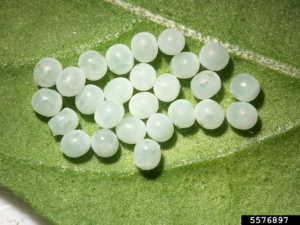
BMSB can cause fruit deformation and make the fruit unattractive, cause delayed fruit maturation, or may even cause fruits to form without seeds. Additionally, BMSB’s feeding action can create access for some other harmful pathogens to infect the plants.
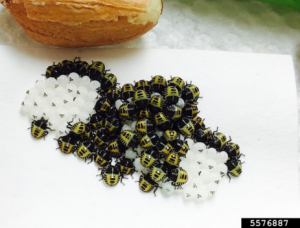
Brown Marmorated Stink Bug was accidentally introduced into the United States in 1998 from Asia (Japan or China), and its rapidly spread and established in some states. Brown Marmorated Stink Bug is a potentially high risk pest to agriculture in the United States.
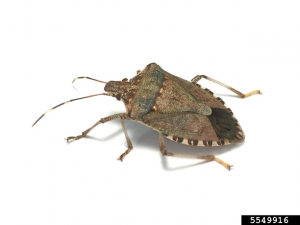
Based on the recent distribution map from Eddmaps.org (Figures 3, above), BMSB has now been reported in more than 42 states, which is a significant jump in detection from the previous years.
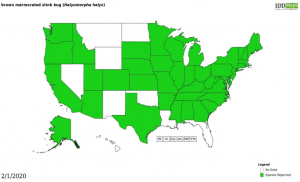
Given that the BMSB feeds indiscriminately on a wide array of crops and its serious threat to agriculture, we need increased vigilance to limit its spread to areas where it has not previously been reported.
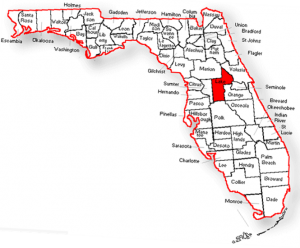
The distribution of BMSB in Florida has been restricted to Lake County. A small number of BMSB were detected during routine stink bugs surveys on peaches between 2016 and 2019, showing that BMSB could survive in Florida, but with limited capabilities to reproduce compared to other states. So, we need to take urgent preventative measures since Florida is a tourist destination, and because adult BMSB can unintentionally be moved around by humans.
To understand the current BMSB population, the University of Florida and FDACS-DPI are currently monitoring the population in Lake County, Florida. We are also exploring opportunities to assist with the control of the pest through biological control. For more information about our current survey and biological efforts, you can contact (Gideon Alake, agideon@ufl.edu). Our lab also periodically provides extension educational programs on this pest through the Florida First Detector program.
For more detailed information about BMSB, please check these links (1, 2). Also, check out this helpful video on how to identify BMSB.
 1
1
